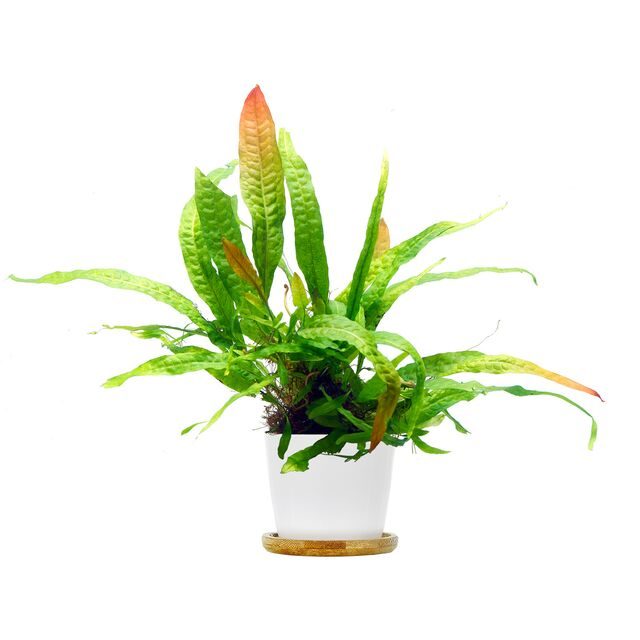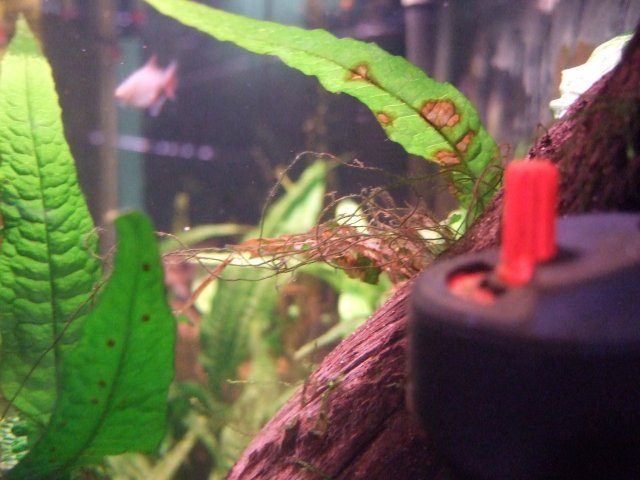The fern is a beautiful, delicate plant that can take up space. But it doesn’t have to be a death sentence for your garden if you know what to do! No one loves their houseplant more than me, so I decided to share my secrets with everyone on how they could save theirs.
Java Fern is a type of plant that can be found in many different locations. They are very easy to care for and have some amazing benefits. Here are some ways to save them!
The fact that Java ferns are a low-tech plant is the main reason for choosing them. But what bad luck it would be to discover it dying.
That’s something we’re aware of. In reality, no matter how simple a plant is to care, it may eventually succumb to the elements. The most wonderful thing is that you can still preserve it if it occurs.
So, what should you do if your Java Fern dies?
Java Iron supplementation, important macronutrients, and sufficient illumination may all help to prevent fern death. Increasing CO2 levels and eliminating algae are also beneficial. It dies as a result of a lack of nutrients, CO2, incorrect planting, and other factors.
This was simply a quick rundown of what can be done to help them. There are other more things that must be considered before they may be saved.
Now, let’s get into the specifics-
Is It True That Your Java Fern Is Dying?

https://www.2hraquarist.com/ Source: https://www.2hraquarist.com/
The issue now is whether or not your java fern is really dying. People are often scared when they see their fern becoming yellow, brown, translucent, or other colors. However, we must clean it out.
Let’s examine whether these hues indicate that they’re dying or not-
Observing Black Spots on Java Ferns
The black markings on Java Ferns are rather common. These blemishes aren’t necessarily a terrible thing. It’s also possible that this is java fern propagation. Young java fern plants often grow from these dark areas. Don’t be alarmed if you see black stains on them.
These dark areas, on the other hand, are likely to perish if no new plants develop from them. So the best bet is to wait a day or two to check whether they’ve sprouted any new plants.
Changing Colors
The java fern seems to be turning yellow and has pinholes. It may be restored to green when it becomes yellow. It arises as a result of a shortage of essential nutrients. It’s caused by a lack of nitrogen, iron, potassium, or magnesium.
The first step is to ensure that the rhizomes are not coated in any way. The leaves may turn yellow if they aren’t exposed to light.
If there are both new and old leaves Changing Colors, it’s facing nitrogen deficiency. If only the older leaves are Changing Colors, this is phosphate deficiency.
Dead patches have been added to older yellow leaves in this photo. Finally, if there are yellow pinholes on it, it is suffering from potassium insufficiency. Iron shortage is evident if the whole java fern has become yellow.
Use those supplements based on the nutritional shortfall your plant is experiencing. If you have an iron deficit, for example, take iron supplements. The supplements we suggest are listed below.
Darkening to Dark Green
Dark green tips may be found on the young leaves of Java ferns. It’s not need to be concerned about Java Fern becoming green. It’s the same as if you had black patches on your body. This indicates that these leaves have sprung fresh growth.
However, it may happen for a variety of reasons. And that’s what nitrogen insufficiency is all about. Check for fresh growth on the green tips to get a sense of it. If the green tips aren’t growing and are dissolving, you’ll need to increase your nitrogen dose.
Adding fertilizers is a simple method to do this. Here are our top nitrogen-rich fertilizer recommendations:
| Image | Product | Priec |
|---|---|---|
 | Urea Fertilizer by Greenway Biotech | Shop Now! |
 | N-Primer Nitrogen TPS Nutrients | Shop Now! |
Transparency Becomes Visible
Java Fern Transparency Becomes Visible is a good sign. It just means that there are good growing conditions provided to your java ferns.
Phosphate is really a favorite of java ferns. They may also take up a lot of space. When they become translucent, it means your tank has a lot of phosphates.
Sometimes they seem to turn transparent when there’s an ample amount of light present. Plus there are many cases of Transparency Becomes Visible after installing a diffuser.
Pale/Turning Light
Due to a shortage of macronutrients and nitrogen, Java ferns become pale/lighter than green. If you have a high-tech tank, this may also happen. Too much light exposure in this situation might cause the leaves to become pale. They can’t keep up with the growth and become pallid as a result.
You may give them more nitrogen to help them green up. If you wish to boost your macronutrient intake, however, you need……
Changing Colors

https://www.aquasabi.com/ is a good place to start.
Java Fern Changing Colors is caused due to excessive lighting and temperature. This high temperature can affect the salinity as well.
However java fern Changing Colors doesn’t mean that they are dying. When you have enough nutrient content, they have the potential to turn red in presence of excessive lighting and high-temperature conditions.
If you want to get rid of java fern Changing Colors, try tuning down your lighting system. This will help them green-up. And also prevents the new leaves from Changing Colors.
If you want to be certain about your light intensity, though, you should always verify the actual lumen. It is possible that the plant size to light ratio will not work out. So, here are our suggestions for lumen meters:
| Image | Product | Price |
|---|---|---|
 | LX1330B Digital Illuminance Light Meter by Dr.meter | Get Now! |
 | Digital Illuminance/Light Meter BTMETER BT-881E | Get Now! |
Is it possible to save Java Fern once it has turned brown or black?
Yes, it is possible to preserve it. When anything is wrong with the environment in which Java Fern is growing, it becomes black/brown. There might be issues with nutrition levels, sun exposure, planting, and so forth.
These issues are simple to resolve. The leaves will return to their original green color if these issues are resolved.
Why is Java Fern Dying? [Reasons & Solutions]
After three transition phases, the Java fern dies. They become brown first, then black.
Finally, the leaves disintegrate or melt. The plants die as a consequence of this.
Let’s have a look at these stages in more detail below-
The Brown Phase is the first phase.

https://www.aquariacentral.com/ is a good place to start.
The leaves begin to lose their green tint at this stage. They become dark leaves over time.
This browning might be whole leaf browning or just a section of it. When the leaves begin to turn brown, they seem to shrink somewhat. They aren’t as active as they formerly were.
Let’s look at what causes browning of the leaves and what can be done to avoid it-
Nutrient deficiency is the first reason.
A shortage of nutrition may cause browning of the leaves. The leaves of the java fern get their nutrition from the water since they are not planted on a substrate.
The most common reason of browning leaves is an iron deficit.
Use iron supplements as a solution.
To make up for the iron deficiency, you should add iron supplements to your water. The nutrient iron is responsible for the java fern’s green leaves. If you’re currently taking a vitamin supplement, ensure sure it contains iron.
If you already have iron, check your water hardness. Most of the time leaf necrosis happens when the water is too soft(<4.0 dGH).
In this scenario, Seachem Equilibrium may be used to harden the water. Alternatively, a Gh booster may be simply created at home.
Magnesium will work if your water is already hard enough and contains iron.
We propose the following iron and magnesium supplements:
Reason 2: CO2 deficiency
The presence of CO2 is not absolutely necessary for the growth of the java fern. CO2, on the other hand, is clearly advantageous. It aids in their development.
The shortage of co2 causes the leaves to become brown, in addition to the poor growth rate. This is due to the fact that CO2 aids plant photosynthesis. They break down sugar from carbon dioxide and water using the sun’s energy.
As a result, when there is less CO2, photosynthesis slows. When the leaves of the java fern become brown, it indicates that there is a deficiency of CO2.
Increase CO2 intake as a solution
In the aquarium, you may intentionally boost CO2 intake. Yeast may be used to manufacture it at home.
The CO2 produced by yeast is adequate to guarantee that the leaves develop properly. For CO2 supply, you may simply create a co2 reactor at home.
Improper Planting is the third reason.
The Java fern is an example of a plant that does not need the use of a substrate. They’re tethered here with rocks or driftwood.
The majority of individuals, however, make the error of planting them too deep in the ground. This protects the rhizomes from exposure to light. As a result, the leaves become brown.
Make sure you don’t plant in the soil as a solution.
You must ensure that they are not planted in the soil at this time. This will prevent the rhizomes from receiving light, causing the leaves to become brown.
The java fern’s roots must be bound with pebbles or driftwoods. Zip ties or threads are required for this project.
We’re back to provide you with some high-quality suggestions. –
The rhizomes are not coated in any way in this manner. Don’t worry if your driftwood doesn’t settle to the bottom. Just wait until it reaches the location where you want to knot the java fern.
Temperature is the fourth reason.
When it comes to the leaves becoming brown, temperature has a big role. When the temperature is too high, the leaves dry out and become brown.
Solution: Maintain a Proper Temperature
Make sure the temperature does not reach 75 degrees Fahrenheit throughout the day. Temperatures should not surpass 65 degrees F at night. To be safe, you should check the temperature of the aquarium on a frequent basis.
The Black Phase is the second phase.

https://barrreport.com/ is a good place to start.
A variety of factors cause Java Ferns to become black. It’s not that they’re stained with brown patches. Instead, the whole leaf becomes black. Let’s have a look at why this occurs-
The first reason is blue-green algae (BGA)
Algae accumulates quickly on the Java fern, making it very fragile. Detritus tends to collect on the tank when the filtration is poor.
As a result, algae grows on the leaves. They devour the trash and leave a black covering on the leaves as a result.
Use algae eaters as a solution.
You may use API algae eaters to get rid of the algae that is eating on your java fern. These algae eaters consume the algae in a highly effective manner.
Bleach washing the algae-affected plants is another option. In the presence of bleach, this will kill the algae.
To do this, mix 1 cup bleach with 19 cups water. After that, soak the java fern for approximately 2 minutes in the bleach solution. The ferns will be free of algae after this.
Disease from other plants is the second reason.
The java fern may get illnesses from other plants in the tank. In the case of java ferns, it’s fairly prevalent.
These disorders are often caused by fungus, bacteria, and algae. How to get rid of algae has previously been discussed.
So, let’s examine what you may do if your java fern is infected with bacterial or fungal infections.
Soak in potassium permanganate as a solution.
You’ll need a Potassium Permanganate solution to disinfect against various infections.
As a result, choose a water container that corresponds to the height of your java fern. Toss in some water. Continue to add Aquaetic Potassium Permanganate after that. Continue to add until the water becomes a dark pink hue.
Last but not least, immerse the java fern in the solution. Leave it there for 15 minutes before removing it. After taking it out, be sure to rinse it with dechlorinated water. Bacterial and fungal illnesses will not affect your java fern.
The Melting Phase is the third phase.

https://www.reddit.com/source/
Finally, we’ll discuss the topic of java ferns melting. They don’t change color here; rather, the leaves melt before shrinking. This might occur for a variety of reasons. Excessive light and nutritional deprivation are two of them.
Use liquid fertilizer as a solution.
You may purchase liquid fertilizer with important micro and macronutrients to get the correct nourishment.
The fertilizers we suggest are listed below. –
Care and Maintenance
Now that you know all the problems and solutions relating to java fern dying. It’s time for some tips on their Care and Maintenance. These will prevent any unexpected problems regarding java fern. Let’s see-
- Plant/Replant Java Ferns Properly- Java ferns are never planted in the substrate. Their growth will be slowed as a result of this. And they’ll eventually die out. As a result, be careful to bind them together with pebbles or driftwood.
- Ensure that the water temperature is between 65 and 75 degrees Fahrenheit, which is good for java ferns. If the temperature rises over this point, the leaves will turn brown.
- Choose the Right Tank Mates- The Java Fern is suitable for a wide range of species. They come in different shapes and sizes. Because it has a rough leaf surface, this is the case. Arowanas, Catfish, Cichlids, and other tank mates are all compatible.
It’s critical that you properly care for and maintain your java ferns. The likelihood of their mortality may be reduced with proper treatment.
FAQs
Now we’ll address some of the most often asked Java Fern questions.
How can I tell if my Java Fern is on its last legs?
If the Java fern gets brown/black and no new leaves emerge from it, it is dead. Furthermore, if they diminish significantly in size, they are dying.
Is it true that Java fern reduces nitrates?
Yes. Java ferns may help to lower nitrate levels in aquariums. The dissolved nitrates in water are absorbed by their leaves.
Conclusion
On Java Fern Dying, that was all we had to say. There were a lot of ambiguous points in our article that needed to be clarified. We attempted to depict them as simply as possible. It is recommended that you check to see whether your leaves are dying and changing color as they regularly do.
Thank you for sticking it out with us all the way to the finish. If you have any questions, please leave them in the comments section below.
The “how to keep java fern small” is a common problem for many people. Here are 7 ways to save them!
Frequently Asked Questions
Related Tags
- java fern turning black
- java fern turning brown and yellow
- java fern problems
- java fern too much light
- java fern growing roots on leaves

